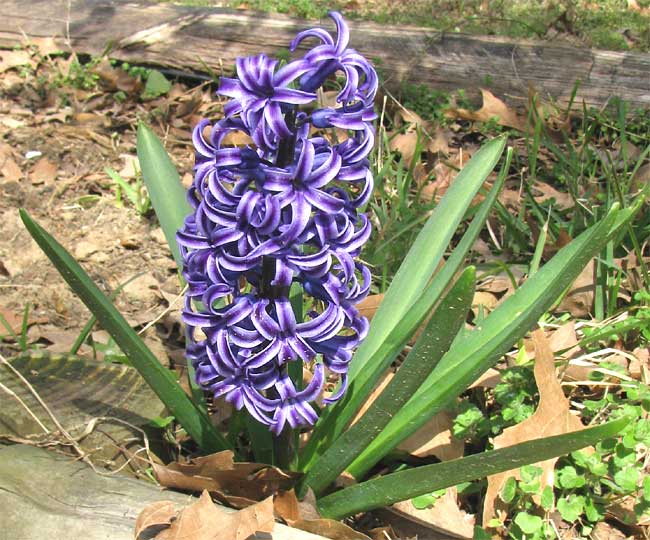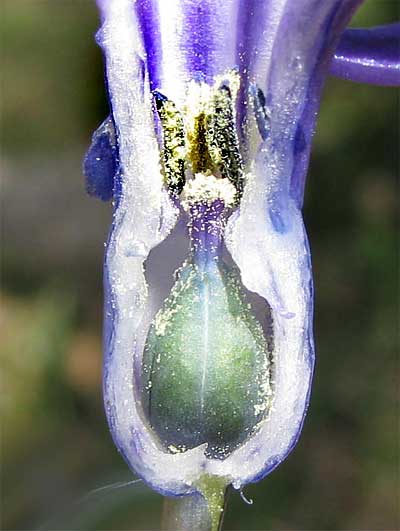Excerpts from Jim Conrad's
Naturalist Newsletter

from the March 9, 2009 Newsletter, issued from the forest near Natchez, Mississippi; elevation ~400ft (120m), ~N31.47°, ~W91.29°:
COMMON HYACINTHS
Karen's hyacinths began flowering a couple of weeks ago, first the white ones, then later the bluish and pink ones. You can see a blue-flowered one above.
Common Hyacinths, HYACINTHUS ORIENTALIS, like all hyacinths, used to reside in the big Lily Family but now they have their own family, the Hyacinth Family, or Hyacinthaceae. Among features distinguishing hyacinths from many other lily-like plants are the fact that they arise from bulbs, their stemlessness, and their flowers being deeply lobed, bell-like affairs with narrow lobes equal to or shorter than the tube below them.

Above you see a cross section of the lower, tubular part of a flower. Notice that there's no green calyx below a colored corolla, which is typically the case. Here the calyx and corolla are fused into just one, colored, corolla-like thing known as the perianth.
Sitting in the bottom of the flower is the female pistil composed of the oval, greenish ovary at the bottom and the blue, neck-like style atop the ovary topped with the white, fuzzy stigma. The dark, banana-shaped items attached to the perianth's wall just above the stigma are male, pollen-producing anthers, and the whitish dust all over the place is pollen. Pollen grains land on the stigma, germinate, and send a pollen tube down through the style to ovules inside the ovary. The male sex germ migrates down the pollen tube and fertilizes the ovules. Ovules mature into seeds, and the pistil into the hyacinth's fruit.
Seeing so much pollen dusting the flower's interior you might wonder what's to keep the blossom from pollinating itself. I'm unsure how hyacinths do it but often flowers in this and nearby taxa practice "proterogyna" (the pistil matures before the anthers) or "proterandry" (anthers first).
About 2000 cultivated forms of the Common Hyacinth are recognized. The wild stock originally came from southwestern Asia, Turkey, Syria and Lebanon. Hyacinth bulbs are poisonous.